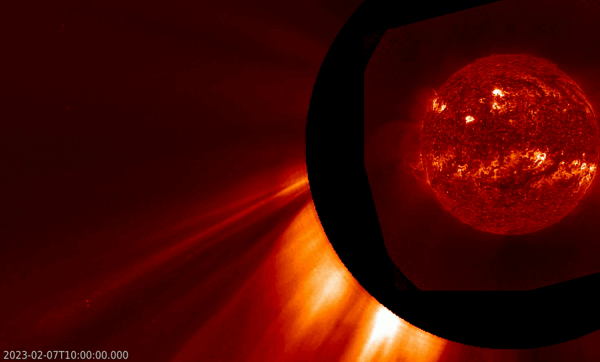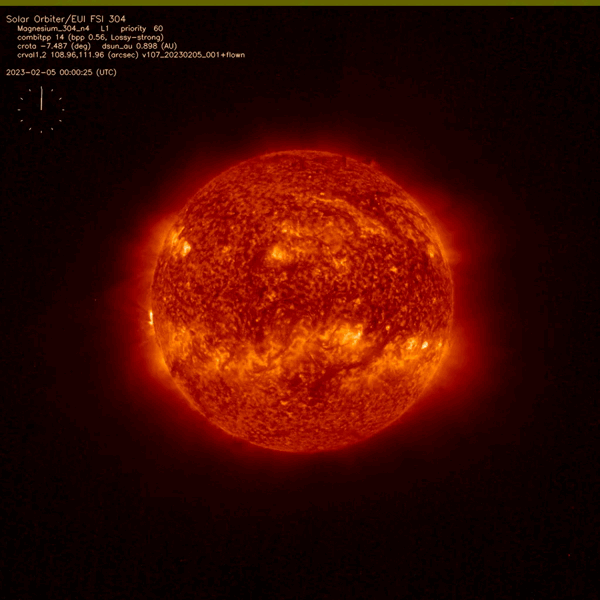Images in extreme ultraviolet (EUV) taken shortly after noon on 7 February showed a spectacular eruption near the solar east limb. GOES soft x-ray flux started to slowly increase from 13:33 UTC onwards reaching a peak of M1.0 at 13:53 UTC and ending near 14:25 UTC. Note that the C5.5 flare peaking at 13:23 UTC is unrelated and originated from a sunspot region near the Sun's central meridian.
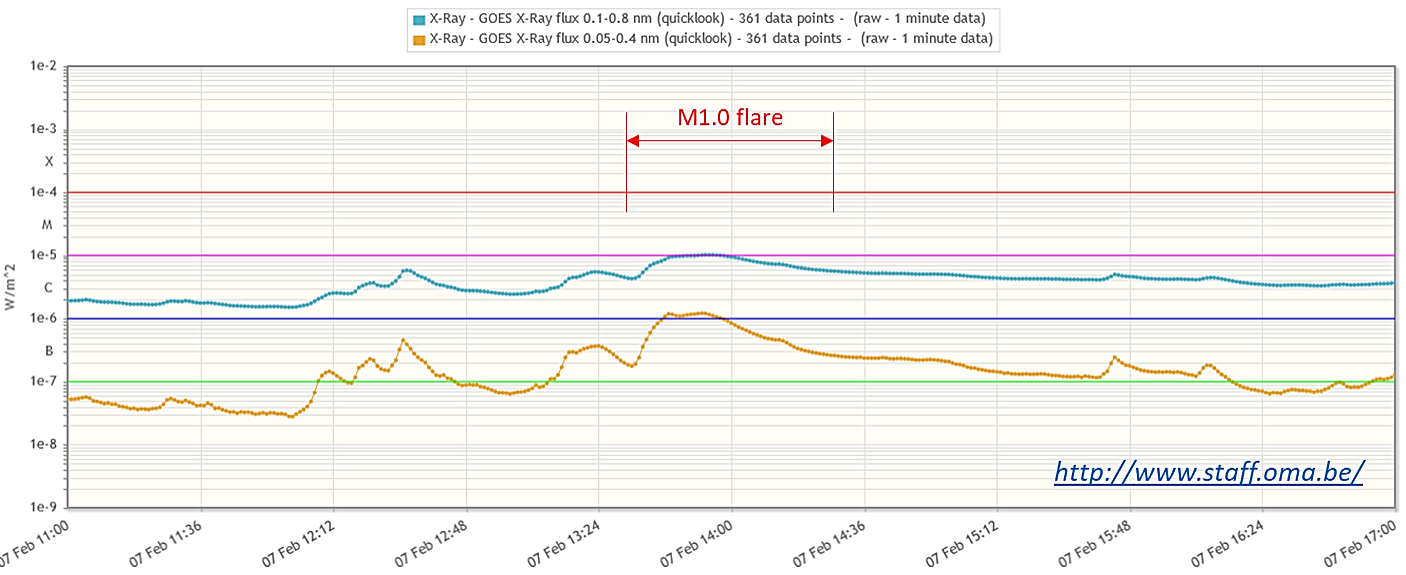
The wide-field GOES/SUVI 304 imagery underneath shows a complex eruption stretching even beyond SUVI's field-of-view to the eastern direction. A part of the ejected material is permanently expelled into space towards the east (to the left), but a portion can also be seen returning to the solar surface (annotated image).
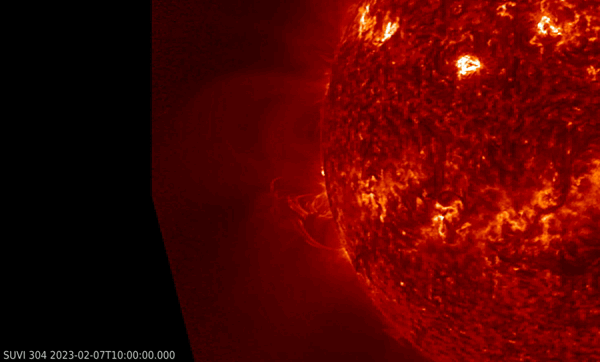
The imagery underneath show a side-by-side comparison of the event as observed by SUVI at 30.4 nm (about 80.000 degrees; left) and 9.4 nm (multi-million degrees; right). The source is clearly still behind the solar limb, implicating that the true intensity of the flaring event was most likely significantly higher than M1. It is thought that the source region of the event is NOAA 13217, which was also responsible for the X1.1 flare on 11 February (see this STCE newsflash).
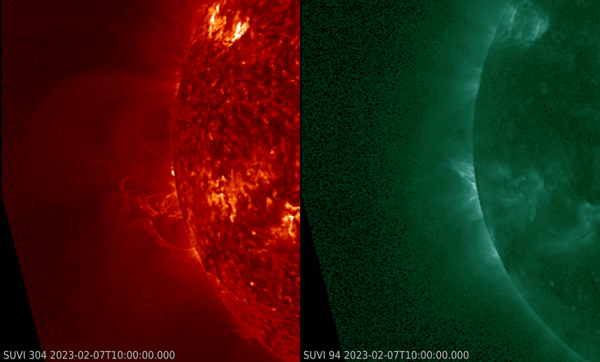
The most amazing observation pertaining to this event was that of the associated coronal mass ejection (CME), first visible in SOHO/LASCO C2 coronagraphic images at 14:32 UTC. Remarkably, the CME was not heading to the east as the ejected material, but rather to the southeast as can be seen in the compilation and clip underneath. A more extreme deflection of a CME produced by what was most likely the same active region, was observed just 2 days earlier on 5 February by EUI (Extreme Ultraviolet Imager) on board of Solar Orbiter. The CME started out again in the eastern direction, but then -as if hitting a (magnetic) wall- turned due south (compilation). This kind of CME deflections are not so uncommon, with for example another eyebrow-raising event reported in this STCE newsitem. CME deflections are the worst nightmare of space weather forecasters, as described e.g. in this paper (Möstl et al. 2015). Their post-event analysis revealed that a fast "earth-directed" CME associated with an X1 flare near the solar disk centre on 7 January 2014 got deflected and eventually delivered only a glancing blow to the earth environment. As a result, instead of the expected moderate to severe geomagnetic storm, only unsettled geomagnetic conditions were recorded.
